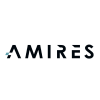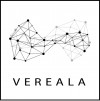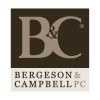26 October, 2017
The Joint Research Centre of the European Commission, organises a survey to address specifically the needs for nanomaterial benchmark materials (certified reference materials / reference materials / representative test materials). The questionnaire consists in the 8 following questions:
-
In which legislative area do you have or expect specific measurement or testing needs that require nanomaterial benchmark materials.
The JRC only produces benchmark materials needed for the preparation/implementation of EU legislation/policy. This may include activities of relevant international organisations (e.g. the OECD). -
For which measurable property or endpoint is the benchmark material needed?
A material is chosen to become a benchmark material because of its relevant measurable property(ies), e.g. average particle size, the purity of its chemical composition, or its behaviour in an (eco-)toxicological in vivo or in vitro test. -
Is there a preference to produce the benchmark material with a specific chemical composition (incl. coating), or from a specific material?
It may be useful to have the benchmark material made from a material that is especially relevant for the market. -
How will the benchmark material be used?
Will it be used to calibrate instruments? Will it serve as a benchmark to compare with other materials? Will it be used to validate methods or evaluate the proficiency of laboratories with a certain measurement (or testing) method? Or is it simply needed for ensuring that for a given project all partners test the same lot and batch? -
What is the required reference status of the benchmark material?
- Does it have to be a certified reference material (CRM)? (This means the RM has certified values, which are needed for calibration and for the assessment of method trueness. CRMs are the only type of RM that can be used to fully check whether a measurement result is accurate.)
- Or is it acceptable that the material is a non-certified RM? (Non-certified RMs must be checked for homogeneity and stability in terms of the relevant property, but they have no certified value for that property. They have many important applications in quality control systems, such as the monitoring or comparison of instrument-, laboratory- or operator-performance over time or between places/laboratories.)
- Or is it acceptable that the material is a representative test material (RTM)? (An RTM is material that is shown to be homogeneous and stable in terms of one or more of its properties, but its intended use is in the development of methods to measure other, related properties e.g. an (eco)toxicological endpoint.) -
What are the quantitative requirements for the RM/RTM properties?
What is the required shelf life? What is an acceptable difference between samples? And (for CRMs only) how accurate shall the certified value be? -
What is the needed amount of the RM/RTM?
This depends on how many and what type of laboratories / test facilities will likely need the RM/RTM, how often they will use the RM/RTM, and which quantity of the RM/RTM the laboratory / test facility needs for each test -
What is the most appropriate type of collaboration to produce the material?
The JRC is open to collaborating with external partners to produce RMs/RTMs.
Please follow this link to download the questionnaire template provided by JRC.
NIA Member should send their comments to Guillaume.Flament@nanotechia.org by email. This NIA consultation will close on 28 April 2016.



















